Conscious Creators: How today’s designers are tackling issues of sustainability

Dress: Encircled
Jewelry: Finley
With the rise of fast fashion and new collections coming out over 16 times a year, fashion is one of the industries with the highest impact on the environment. According to a (PDF file) 2017 Ellen MacArthur Foundation report (external link, opens in new window) , textile production produces 1.2 billion tons of greenhouse gasses annually. Not only are we in need of change how we produce, but we are also in need of change in the mindset as consumers. Luckily, sustainable and ethical brands have been taking over the market as consumers are becoming increasingly aware of the value of their dollars spent, and how it is their vote in the future.
However, starting a sustainable business is no easy task. It takes a creative mind to find alternatives to wasteful options as well as continuous problem-solving. Hear the strategies that four Fashion Zone companies take in order to enact change through the innovation of sustainable business practices.
About The Editorial
Conscious Creators is a collaboration between storyteller and designers. It explores the communion of human and nature by using elements of earth, air, and water. The fashion editorial celebrates sustainability by showcasing designers who create mindfully and expresses how important it is to make conscious efforts into preserving our home.
Photographer: Freya de Tonnancour (external link)
Stylist: Kelvin Li (external link)
Model: Simone, BNM Models
Hair & Makeup Artist: Emma Rafizadeh (external link)
Designers: Encircled (external link) , Soft Focus (external link) , Finley, Chic Made Consciously (external link)
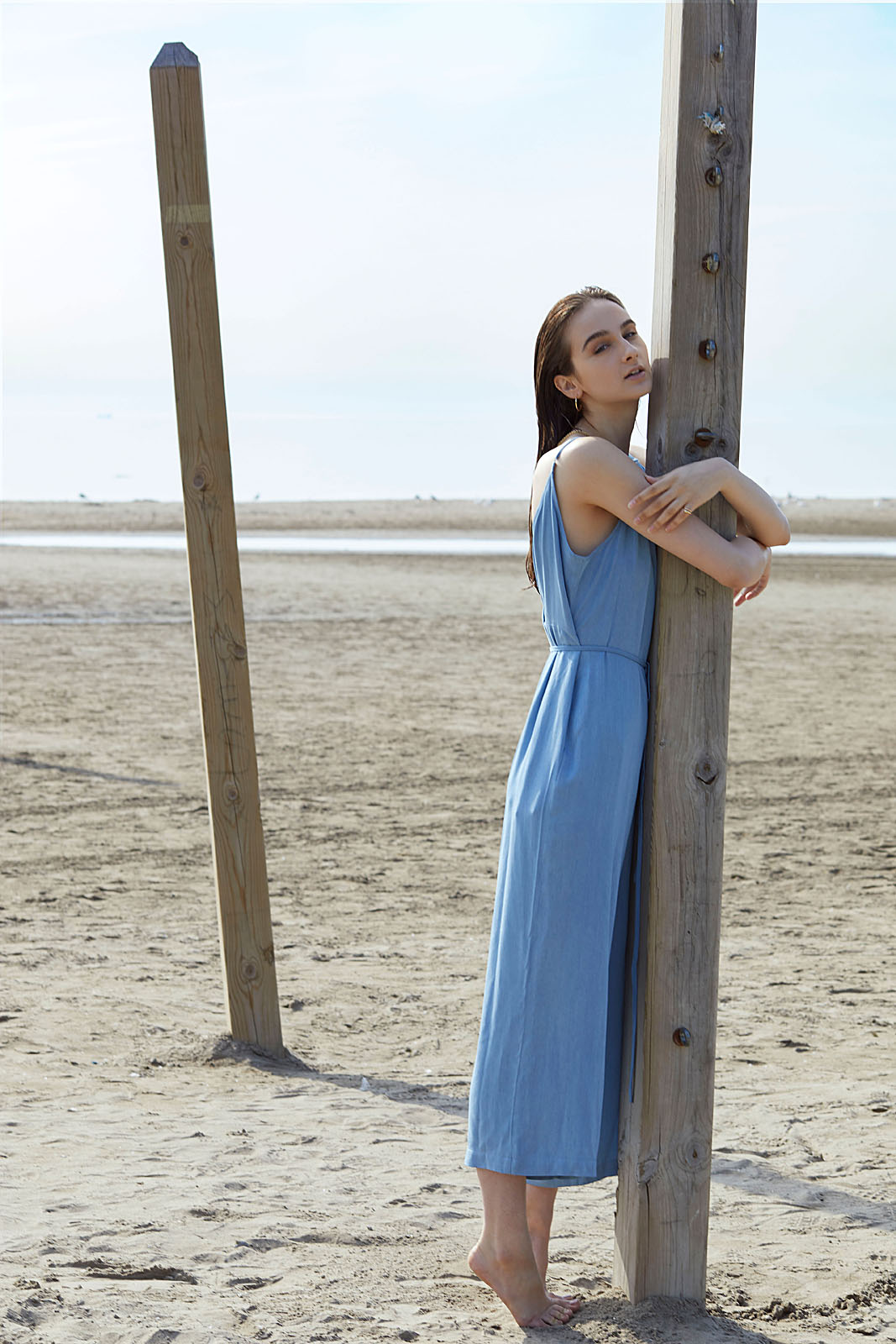
Local Production
According to Rob Monroe from the Scripps Institution of Oceanography (external link, opens in new window) , in 2019, the world’s CO2 levels have reached an all-time high of 415 ppm. This number has never been seen in human history and is due to our addiction to burning fossil fuels. Although transportation is not the only factor at play, it is a strong contributor. By choosing to produce locally, businesses are reducing their carbon footprint by a high amount.
“Our biggest impact is felt in the actual garment production process which is done 100% in Toronto, which lowers our carbon footprint instantly by a massive amount.”
- Kristi Soomer, founder of Encircled
However, the use of fossil fuels extends beyond transport, as it is used in the manufacturing process to power the production plants. The larger the batch, the more fuel it requires.
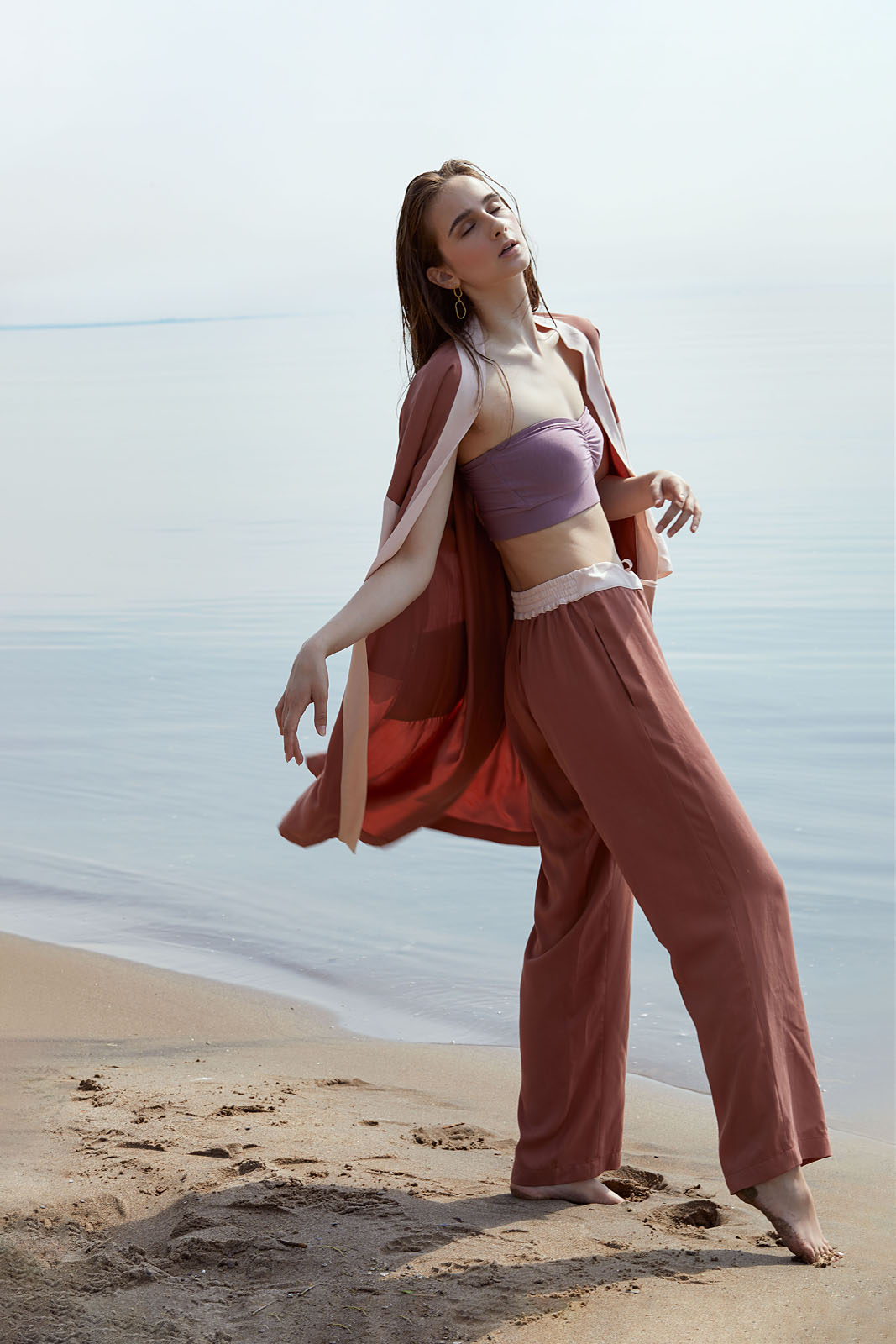
Robe: Soft Focus
Tube Top: Encircled
Jewelry: Finley
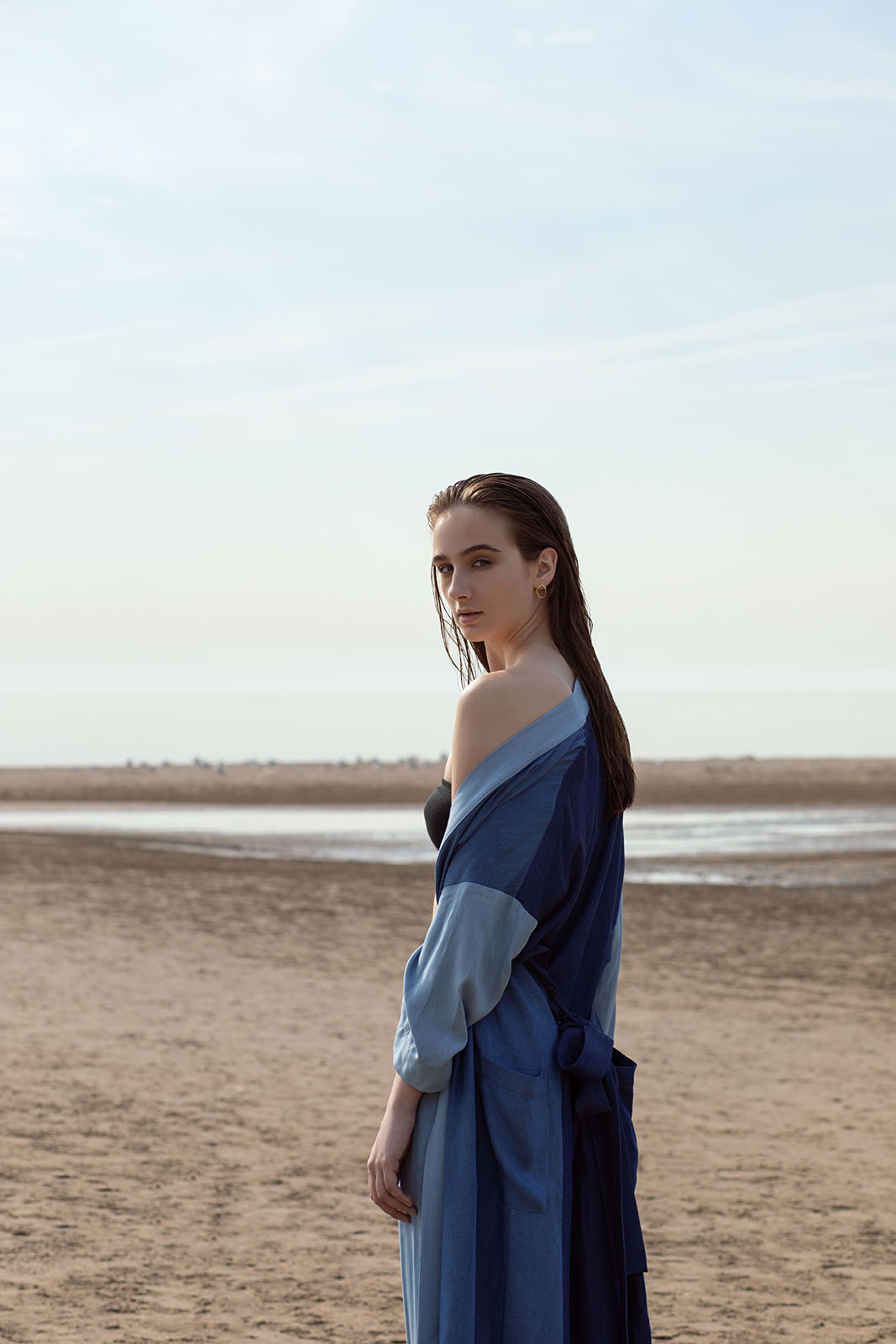
Robe & Pants: Soft Focus
Tube Top: Encircled
Jewelry: Finley
Small Batch Manufacturing
Small batch production is an effective way to reduce waste as it allows for not only greater oversight on the production of higher quality products, but also for better inventory management. Producing too much can lead to higher amounts of damaged goods and unsold stock. According to Euronews (external link, opens in new window) , since 2013, fast-fashion giant H&M burnt over 60 tons of clothing from their inventory which they claim was unsellable due issues at the production level.
“Currently the collection is produced in small runs through Canadian factories in Toronto and Montreal. The nature of being a smaller, nimble business allows us to be innately sustainable in our approach, which is great. We avoid waste, over-producing and can focus on making classic, quality, long-lasting pieces that people can love + wear for years to come."
- Sammi Smith, founder of Soft Focus

Loungewear: Soft Focus
Jewelry: Chic Made Consciously
It's All About Water
Everyone knows that water is a necessary source of life, but did you know it is heavily used in textile and jewelry manufacturing! During the jewelry production process, water is used to wash off the jewelry between steps. The water remaining from this process contains waste chemicals that are very toxic to the environment if dumped. Finley chose to do things differently.
“What we do differently is that we actually treat all this water. We separate the waste metals and chemicals from the water to make it usable again. We take this wastewater, ship it out to a responsible recycling facility for them to process it and we recycle it. We actually reuse 60% of the water back into the production.”
- Kathleen Chan, founder of Finley

Jumper: Encircled
Jewelry: Finley
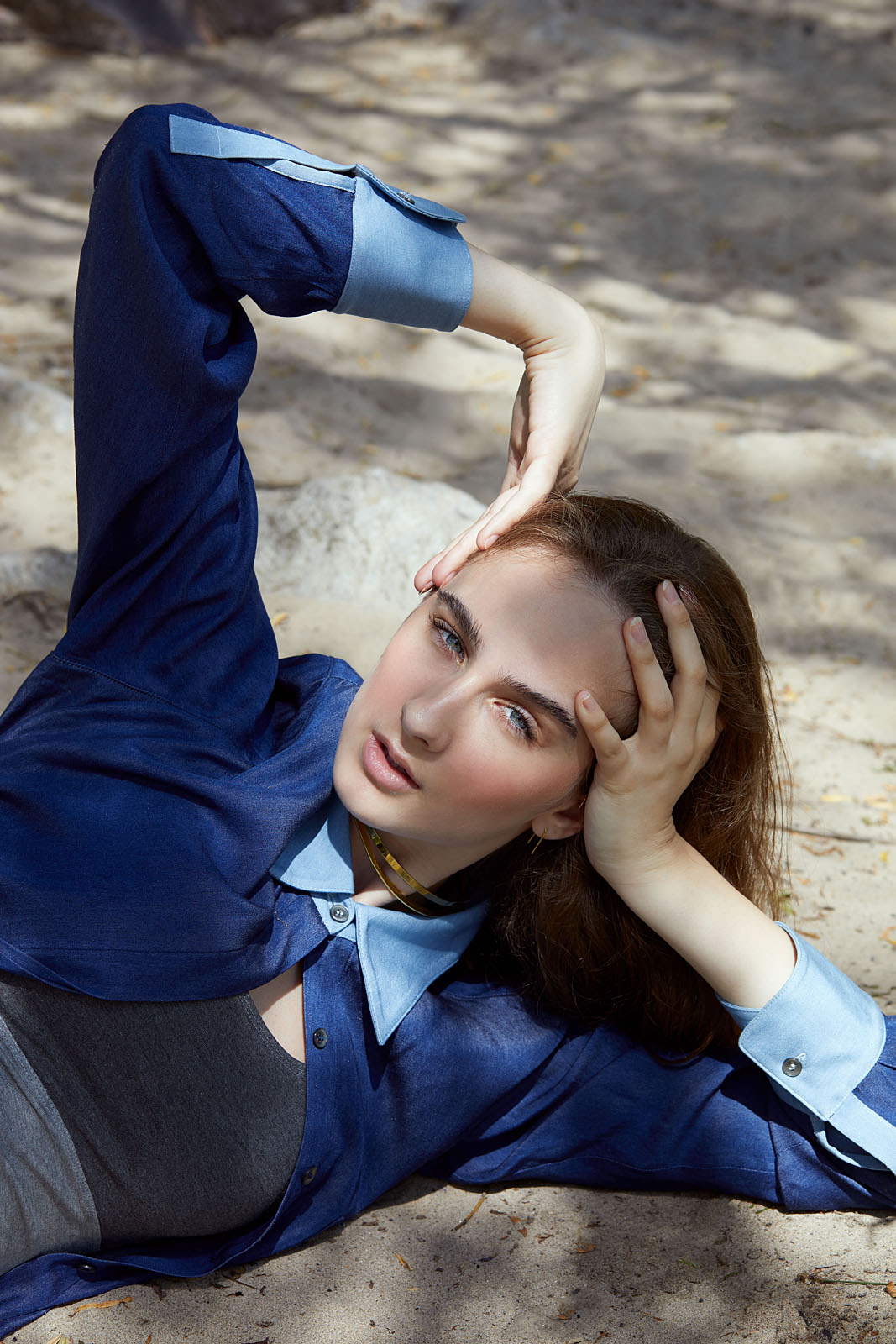
Blouse & Top: Soft Focus
Jewelry: Chic Made Consciously
Going Full Circle: Reclaimed Materials
Not too long ago, reclaimed textiles often meant patchwork design that was targeted at a certain type of consumer. It is no longer the case as more and more designers are recycling what used to be destined for waste into beautiful garments.
Designer Cassandra, founder of Chic Made Consciously, takes it one step further by repurposing material into beautiful accessories. Her newest jewelry collection is made from upcycled brass coming from war remnants such as bullet casings and landmines.
“Our collections empower consumers to wear a story that promotes fair trade opportunities, preservation of traditional craftsmanship, and upcycling of materials for a sustainable future.”
- Cassandra Ciarallo, founder of Chic Made Consciously
It is a healing process, as both material sourcing and production is done in Cambodia in a fair trade manner. Artisans transform the remnants of a war that caused harm to their people into beautiful timeless jewelry.
In addition to reclaimed materials, repurposed production scraps is a great way to make money as well as making sure nothing is wasted. Both Soft Focus and Encircled use leftover fabrics to create accessories such as scrunchies and hair bands.

Top: Soft Focus
Jewelry: Chic Made Consciously
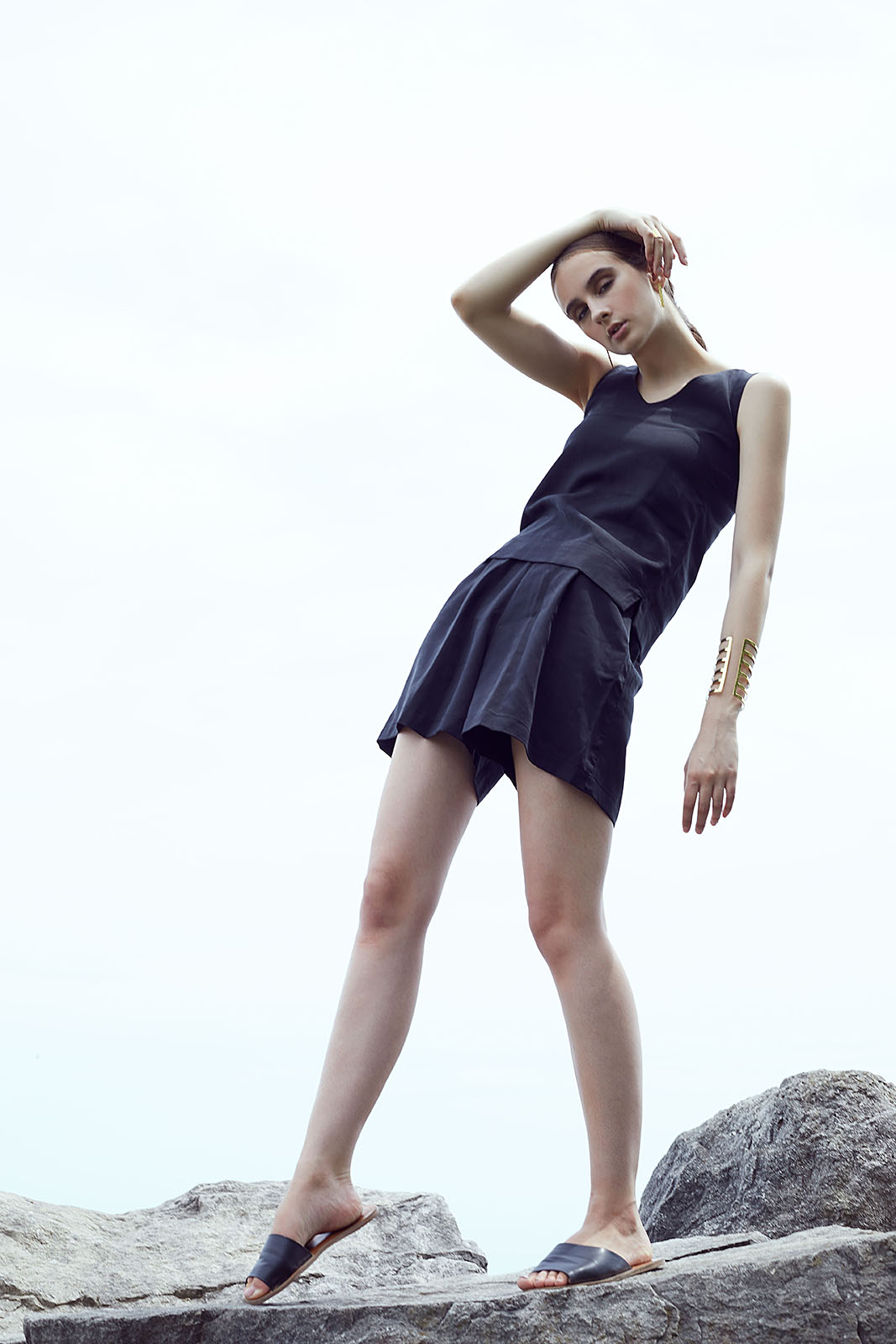
Top & Shorts: Encircled
Jewelry: Chic Made Consciously
Designing with Longevity in Mind
In order to truly be sustainable, businesses need to consider the customer’s needs. Trends come and go but there are always classic pieces that stay within your wardrobe for years to come. Besides fabric quality, two factors affect disposability: minimal classic design and multi-functionality.
“When it comes to design we really want to ensure that these are classic timeless pieces that stick with you and on top of that they're comfortable and they fit in your life so that you are less likely to discard it.”
- Kathleen Chan, founder of Finley
“We won’t make a design unless we can envision our customer wearing it multiple ways”.
- Kristi Soomer, founder of Encircled
There is always a way to be more sustainable no matter what your business is. It is not a race nor is it a competition for perfection. It simply takes a creative mind to find solutions to existing problems in the industry.
“To be a conscious creator means to be thinking holistically, globally, and inclusively. It means being mindful of people and our mother earth while dissecting the supply chain and continuously solving problems that come from a place of openness, transparency and wanting to do better. It by no way means perfection, but it means that taking that extra time to think of how you can help both people and planet in your design process"
- Cassandra Ciarallo, founder of Chic Made Consciously